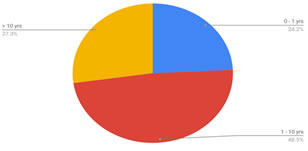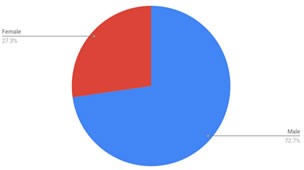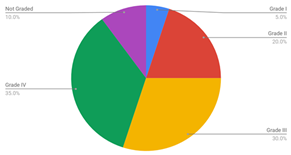|
Table of Content Volume 17 Issue 3 - March 2021
Prevalence of Vesicoureteral reflux in rural population: A cross sectional study
Abhay Kasliwal1, Navin Kasliwal2*, Vaishali Kasliwal3, Anam Sayed4, Yusra Mashadi5, Nida Narvel6
1Associate Professor, 4,5,6MBBS Student, Department of Radiology, Indian Institute of Medical Science and Research, Warudi, Badnapur, Jalna, Maharashtra, INDIA. 2Surgical Oncologist and Assistant Professor, MGM's Medical College, Aurangabad, Maharashtra, INDIA. 3Consultant Radiologist, Aurangabad, Maharashtra, INDIA.
Abstract Background: In urology, micturating cystourethrogram, is a frequently performed technique for visualizing a person's urethra and urinary bladder while the person urinates (voids). It is used in the diagnosis of vesicoureteral reflux, among other disorders like posterior urethral valve, trabeculated bladder, filling defects, diverticula, strictures, among many other urinary disorders. This study is done at college level which caters to a rural population from the nearby areas. This study was decided to be conducted due to lack of data and research statistics on the same. Method: The records of 33 cases were retrospectively analysed from the time span of 2018-2020 who were suspected of urological abnormalities and then were subsequently recommended Micturating Cystourethrogram (MCUG). Results: The most common impression was vesicoureteric reflux (45.5%) followed by posterior urethral valves(13.6%).After analysis of the reports, it was found that out of the total 33 cases, 20 were vesicoureteral reflux in which 7 were bilateral, 8 were right sided and 5 were left sided. Most commonly affected were males more than females and age group was 1-10 years. Most common observed VUR grading was Grade IV. Conclusion: As cited in the other associated and related studies, the same conclusion is drawn in this study pertaining to the rural population. Vesicoureteral reflux is common with posterior urethral valves and often persists, particularly to a poorly functioning kidney. Resolution, if it occurs, usually does so early after relief of obstruction. Reflux, no matter what the pattern, has not been a significant prognostic factor for renal function in this series. Key Word: Vesicoureteral reflux.
INTRODUCTION Primary vesicoureteral reflux (VUR) is the commonest congenital urological abnormality in children, which has been associated with an increased risk of urinary tract infection (UTI) and renal scarring, also called reflux nephropathy (RN). Known risk factors for RN include the severity of VUR, recurrent UTI, and bladder-bowel dysfunction; younger age and delay in treatment of UTI are believed to be other risk factors. Management of VUR is controversial and includes antimicrobial prophylaxis, surgical intervention, or surveillance only. In urology, micturating cystourethrogram, is a frequently performed technique for visualizing a person's urethra and urinary bladder while the person urinates (voids). It is used in the diagnosis of vesicoureteral reflux, among other disorders like posterior urethral valve, trabeculated bladder, filling defects, diverticula, strictures, among many other urinary disorders. In India, VUR is unusual in healthy children with an estimated prevalence in newborns of 0.4% to 1.8%.1,2 However, 30-50% children and 40-50% of infants with UTI have VUR.3 The condition is more prevalent in girls except during infancy when it is more common in boys. Thirty to 60% of cases with VUR develop RN with 5-10% progressing to end stage renal failure. This study is done at college level which caters to a rural population from the nearby areas. This study was decided to be conducted due to lack of data and research statistics on the same. AIM AND OBJECTIVESTo determine the prevalence of vesicoureteral reflux at our institute level catering to rural populations.
MATERIAL AND METHODS The records of 33 cases were retrospectively analysed from the time span of 2018-2020 who were suspected of urological abnormalities and then were subsequently recommended Micturating Cystourethrogram (MCUG). After analysis of the reports, it was found that out of the total 33 cases, 20 were vesicoureteral reflux in which 7 were bilateral, 8 were right sided and 5 were left sided. Micturating cystourethrogram (MCUG), also known voiding cystourethrography is a fluoroscopic study of the lower urinary tract in which contrast (typically diatrizoic acid) is introduced into the bladder via a catheter under aseptic precautions. Now intermittent screening of the patient (AP with full bladder) performed while distending the bladder with contrast. After the bladder is filled to its capacity, the patient is now asked to void [4]. The purpose of the examination is to assess the bladder, urethra, postoperative anatomy and micturition in order to determine the nature of the bladder and urethral abnormalities, mostly vesicoureteric reflux (VUR).
RESULTS The most common impression was vesicoureteric reflux (45.5%) followed by posterior urethral valves(13.6%). diverticula in the urinary bladder (6.8%), trabeculated bladder (6.8%) and calculi (6.8%) were all reported equally. This was then followed by findings of filling defects (4.5%), post void urine residue (4.5%) and a dilated posterior membranous urethra (4.5%). Finally, reduced bladder capacity (2.3%), decrease in calibre of penile urethra (2.3%) and stricture in penile urethra (2.3%) were least reported. Figure 1: MCU findings Most commonly affected age group was 1 - 10 yrs (48.5% of all reported cases), followed by children > 10 yrs (27.3%) and finally individuals between 0 - 1 yr of age (24.2%).
Figure 2: Age wise distribution Of all reported cases, 72.7% were males and 27.3% were females.
Figure 3: Sex distribution Out of the 45.5% cases of VUR that were reported, 40% individuals were affected only on the right side, 35% were bilaterally affected and 25% of the cases were of left sided VUR. Figure 4: VUR distribution Grade wise distribution of the reported VUR cases is as follows: Grade I: 5%; Grade II: 20%; Grade III: 30%; Grade IV: 35%; Ungraded: 10%. Hence, maximum individuals were affected with a Grade IV VUR. Figure 5: VUR Grading
DISCUSSION Primary Vescico-Ureteral Reflux (VUR)5 is a common condition likely related to a congenital anomaly of the Vescico-Ureteral Junction (VUJ) caused by its abnormal embryological development. The findings of this study are a contrast to the study conducted by Cristiana Rollino et al.6 as prevalence of VUR was found to be more in males as compared to females. However, it corresponds to the study conducted by Tej K Mattoo et al., that VUR is found mostly in children, with acquired Reflux Nephropathy more commonly affecting female children and congenital Relux Nephropathies found more in male children.8 Data about the incidence of VUR are reported in the current literature as 25 to 40% of children presenting with urinary tract infection and in 3% to 19% of infants with hydronephrosis diagnosed on antenatal ultrasound scan screening.
CONCLUSION As cited in the other associated and related studies, the same conclusion is drawn in this study pertaining to the rural population.9 Vesicoureteral reflux is common with posterior urethral valves and often persists, particularly to a poorly functioning kidney. Resolution, if it occurs, usually does so early after relief of obstruction. Reflux, no matter what the pattern, has not been a significant prognostic factor for renal function in this series.
REFERENCES
Policy for Articles with Open Access: Authors who publish with MedPulse International Journal of Radiology (Print ISSN: 2579-0927) (Online ISSN: 2636-4689) agree to the following terms: Authors retain copyright and grant the journal right of first publication with the work simultaneously licensed under a Creative Commons Attribution License that allows others to share the work with an acknowledgement of the work's authorship and initial publication in this journal. Authors are permitted and encouraged to post links to their work online (e.g., in institutional repositories or on their website) prior to and during the submission process, as it can lead to productive exchanges, as well as earlier and greater citation of published work.
Height, IVDL-Intervertebral Disc Length
Policy for Articles with Open Access
Authors who publish with MedPulse International Journal of Radiology(Print ISSN: 2579-0927) (Online ISSN: 2636 - 4689) agree to the following terms: Authors retain copyright and grant the journal right of first publication with the work simultaneously licensed under a Creative Commons Attribution License that allows others to share the work with an acknowledgement of the work's authorship and initial publication in this journal. Authors are permitted and encouraged to post links to their work online (e.g., in institutional repositories or on their website) prior to and during the submission process, as it can lead to productive exchanges, as well as earlier and greater citation of published work. |
|
 Home
Home




